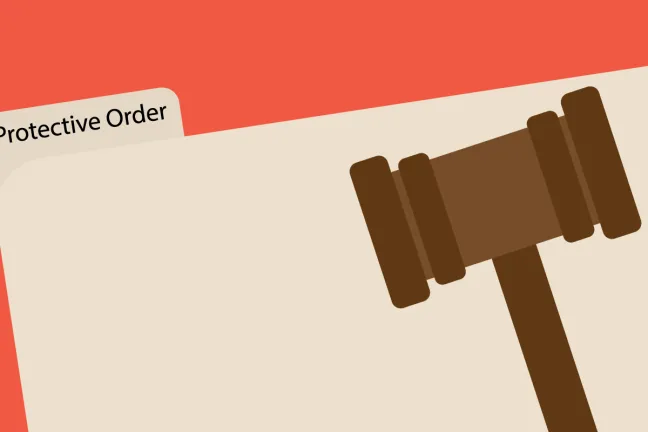This is the five and final article in a series of weekly articles throughout October to share information on domestic violence and our work in the County to address it. Read the first article and second article and the third article, and the fourth article. Visit our blog or follow us on Twitter and Facebook for more.
This week’s final installment of Domestic Violence Awareness Month articles will focus on the various protective orders that are available in Multnomah County.
Protective orders, also known as restraining orders, are court orders meant to protect people from abuse. A protective order works by prohibiting abusers from having contact from having contact with the person who filed the order. Because domestic violence affects people of all walks of life, it's important for us to know how protective orders work.
Some survivors seek out protective orders as a tool to increase their safety, though it is critical to always remember that protective orders may not be a good solution for everyone. When considering whether or not to pursue a protective order, (or supporting someone through the process) it is also important to remember that every situation is different. People experiencing abuse should be given knowledge and resources to make their own informed decisions about what will keep them safest. While protective orders can greatly enhance a person's safety, there are many individuals for whom it may not feel safe or helpful to file for a protective order.
There are 5 types of protective orders
There are five different types of protective orders available in Oregon for individuals experiencing violence or abuse, and someone may apply for one or more at any given time. It is important to understand the eligibility requirements, the filing process, and the specific protections provided by each type of order before filing.
Each order is intended to enhance safety for the person who is being harmed, but the differences between the orders can make the process confusing when selecting which order is best for a given situation. When someone is considering filing for a protective order, it can be helpful to speak to an advocate, court clerk or lawyer for a complete explanation of the requirements and processes.
For a breakdown of some of the nuances of each type of order, you can refer to this helpful chart provided by OregonLawHelp.org.
Key points to remember about protective orders
One way to support someone seeking out a protective order is to help them get the facts of the legal process itself. Here are some key points to remembers:
Protective orders are civil (rather than criminal) orders, and as such, are filed by an individual rather than the State. Protective orders are granted in civil court by a judge, however a violation of that order is considered a criminal offense.
In a protective order, the person seeking protection is the “Petitioner” and the party perpetrating the abuse is the “Respondent.” The petitioner fills out a petition to present to a judge at what is referred to as an ex parte hearing (often the same day or next judicial day) with the petitioner present. At the ex parte hearing, the judge may ask clarifying questions in order to determine whether to grant or dismiss the petition.
If granted, the petition becomes an order and will need to be served to the respondent in order to become active. The respondent is not legally responsible for adhering to the terms of the order until they have been served. Service is most often performed by the Sheriff's Office within a few days of the order being granted.
For most of the protective orders, the respondent can contest the order in court after being served. If the respondent chooses to contest the order, they will have to file paperwork stating that they contest the order and requesting a court date in which both parties must be present. At that court date, the particulars of the order will be heard by the judge. There are no filing, service or hearing fees for any of the protective orders.
It is important to note that obtaining a protective order does not necessarily mean that the abuse will stop, and the person experiencing the abuse needs to determine what they feel will make them safest. A restraining order is one protective measure that may increase safety and the violation of the order has legal consequences, but there is no guarantee that the offending person will abide by the order.
Please consider talking to a domestic violence service provider if you need support or if you are supporting someone who is being harmed.
There are also many helpful videos and brochures available at OregonLawHelp.org.

